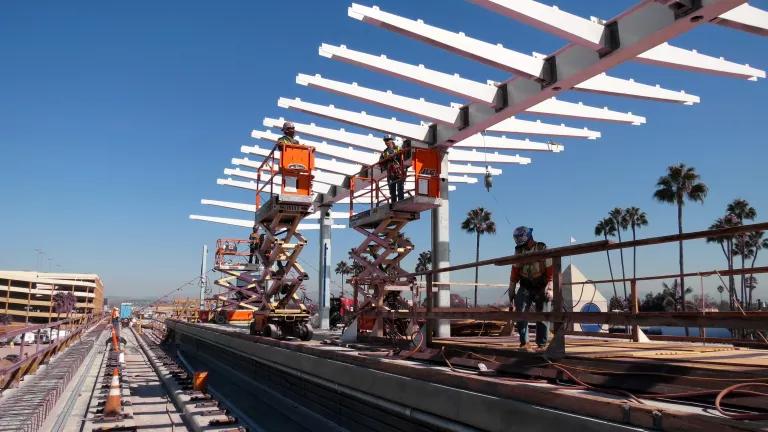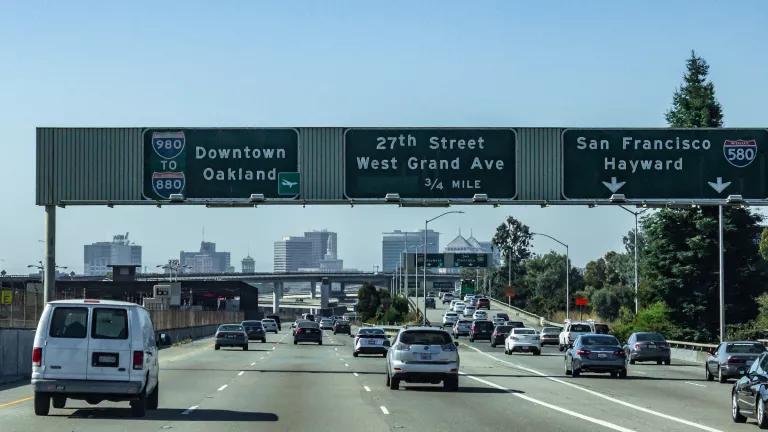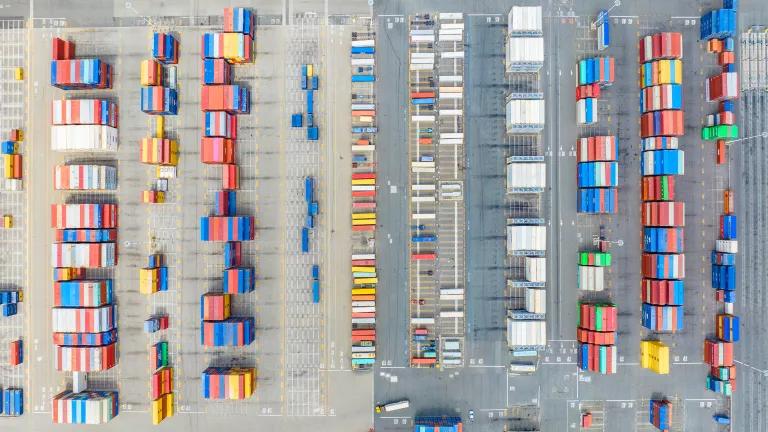Caltrans Offering 1950s-Style False Hope to I-80's Challenges
Caltrans's I-80 CEQA analysis is flawed and reflects a concerning pattern that must change for California to reach our climate, mobility and equity goals.
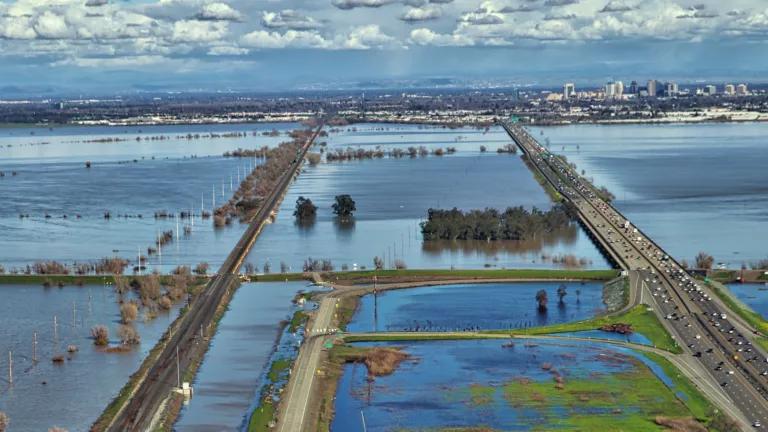
Capitol Corridor tracks and I-80 cross the Yolo Bypass Wildlife Area.
As the calendar flipped over to 2024, over 30 sustainable transportation groups across the state and in the Sacramento area found ourselves wondering if we hadn’t flipped backwards to 1954.
Caltrans was once again proposing to add more lanes to a congested highway, despite decades of evidence that adding more lanes to congested corridors simply brings more congestion—while communities foot the financial and pollution bills that come due as soon as the project is completed.
The latest blast from the past? The Yolo 80 Corridor Improvements Project.
The Project
Caltrans proposes adding one lane of traffic in each direction, expanding the highway from six to eight lanes as it travels from Davis to Sacramento through the Yolo Bypass Wildlife Area. Various alternatives of the project specify those additional lanes to be either carpool lanes, ExpressLanes, or transit lanes. A final alternative proposes converting a lane in each direction to a carpool lane. The project is expected to cost between $230 and $465 million depending on the alternative.
Why New Lanes Can’t Fix Congestion
With these new car lane alternatives, Caltrans is once again promising congestion relief, despite mountains of evidence that more lanes cause more driving, which refills new lanes with just as much traffic as before.
You don’t need to take my word for it—or that of California’s pre-eminent transportation researchers—you can take Caltrans’s own words!
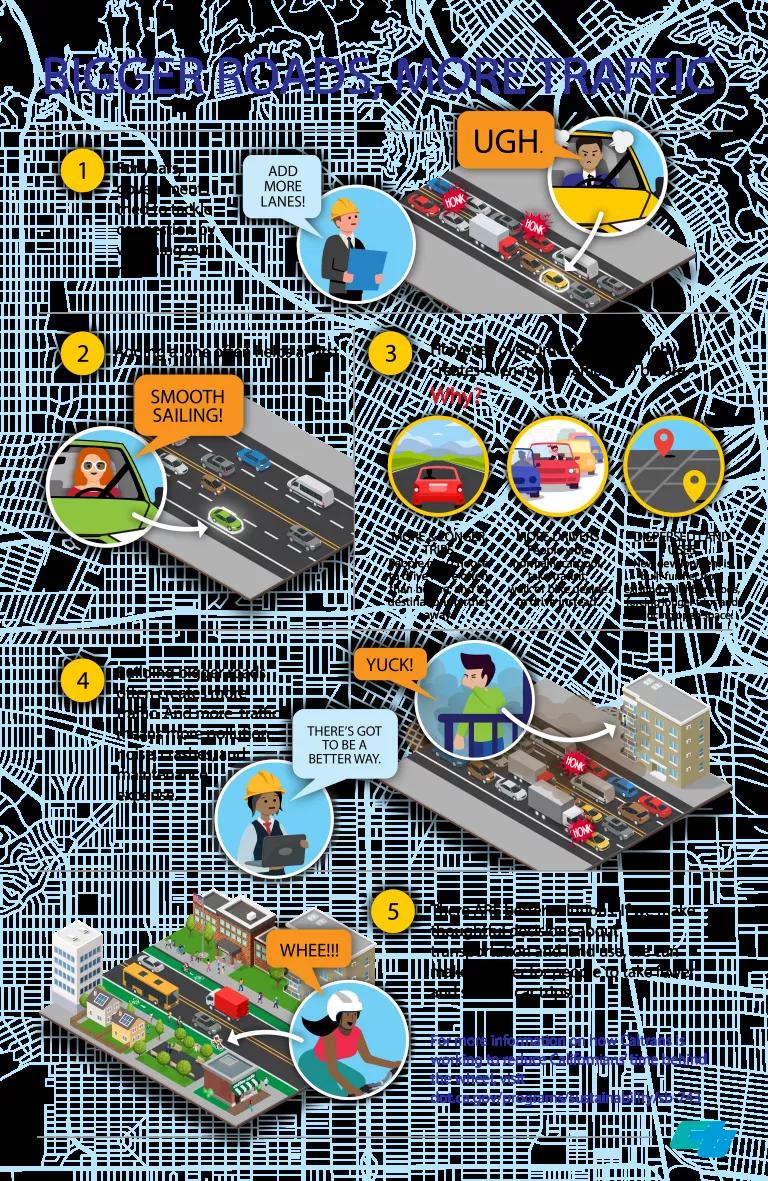
Caltrans's infographic shows how adding more lanes doesn't reduce congestion.
How the Draft Environmental Impact Report Is Legally Flawed
As NRDC reviewed the project’s Draft Environmental Impact Report, we saw several serious issues with how Caltrans analyzed the project’s potential impacts and what it planned to do to mitigate them.
The result is that the public has been deprived a full and honest vetting of the project under the California Environmental Quality Act (CEQA), which requires a fair analysis, disclosure and mitigation of potential environmental impacts.
To recap:
- Caltrans improperly piecemealed the project. Work is already underway to widen the roadway and prepare it to handle new lanes under the auspices of a pavement rehab project. Under the California Environmental Quality Act, agencies cannot chop up projects in smaller pieces to minimize their impacts. These piecemealing issues were documented by a Caltrans whistleblower.
- Caltrans didn’t analyze whether project alternatives achieve the stated goals fairly or correctly, because the agency relied on flawed assumptions and made clear analytical errors. Namely, Caltrans fails to account for the additional driving that the new lanes will cause and relies on flawed traffic projection methods, which serve to overstate the congestion benefits of the alternatives that add vehicle new lanes. Among several analytical errors, Caltrans relied on an inappropriate traffic projection model that assumes drivers would rather take a 2.5-times longer detour rather than leave a little earlier or later to avoid traffic. This serves to dramatically underestimate the project's environmental impacts. Further, Caltrans omitted alternatives, such as improving the parallel Capitol Corridor rail line or making more extensive use of ExpressLanes, that better achieve the project’s purpose with fewer environmental impacts.
- Caltrans did not fully disclose and adequately analyze the Project’s impacts. Because the DEIR relied on flawed modeling, Caltrans arrives at erroneous conclusions about traffic impacts, greenhouse gas emissions, air quality, and energy impacts. Next, when it comes to estimating how much additional driving the project will cause, Caltrans still underestimates the impact. The DEIR also fails to adequately measure the additional car-centric sprawl growth that the project will cause. And the DEIR fails to adequately analyze the Project’s marginal impacts on species and habitats.
- Finally, the DEIR fails to adequately mitigate all the additional driving the project will cause, even though there are feasible mitigation measures. Specifically, the project would mitigate less than half the vehicle-miles traveled.
Several of our concerns were echoed in a letter to Caltrans from the California Air Resources Board (CARB) the State's air quality and climate pollution regulator.
What Should Caltrans Do Now?
In short, Caltrans should go back to the drawing board. In CEQA terms, that means recirculating a revised DEIR that includes additional project alternatives that focus on providing mobility options, rather than more highway lanes that won’t reduce congestion.
Imagine if instead of investing hundreds of millions of dollars in asphalt, Caltrans focused on upgrading the Amtrak Capitol Corridor to provide fast, frequent, all-day service under 100% clean electrical wires. After all, it’s the 4th busiest Amtrak corridor in the county. And if the S.F. Peninsula, San Joaquin Valley and Southern California are all getting fast electric rail, why is Sacramento being left out? The Federal INFRA grant secured for this project can pay for upgrades to rail lines as an eligible grant activity. Residents and decision-makers deserve a chance to consider real alternatives to congestion in this environmental process.
At the same time, the revised DEIR will need to correct the analytical and modeling flaws that lead to implausible conclusions, like that adding more lanes will reduce greenhouse gas emissions.
What’s the Big Picture?
Several state laws, especially SB 375 (2008) and SB 743 (2013), have aimed to align transportation spending with climate goals. Governor Gavin Newsom took important action to direct state agencies to leverage transportation investments to achieve climate goals. Yet, Caltrans hasn't fully heeded that direction and continues to push counterproductive highway widenings that tie up huge sums of money in projects that fail to reduce congestion or give Californians alternatives to driving in traffic, and instead increase transportation pollution. After all, transportation is the largest source of climate-warming pollution in California.

CARB data shows transportation has been the largest source of GHG in California for over 20 years.
Communities living near major highways continue to bear the significant burden of pollution, while Caltrans doesn’t fully account for the environmental impacts of projects.
We’ve seen this pattern play out again and again—most recently along the I-710 corridor in Southern California and the SR-99 corridor in Fresno. Only when pushed hard and under the scrutiny of communities, advocates and elected officials has Caltrans shifted out of its 1950s mindset and focused on solving 21st century problems.
While the California State Transportation Agency touted this week its progress on aligning transportation investments with climate goals, as long as projects like the Yolo 80 Corridor Improvements Project move forward as a highway widening, that work will remain incomplete.


